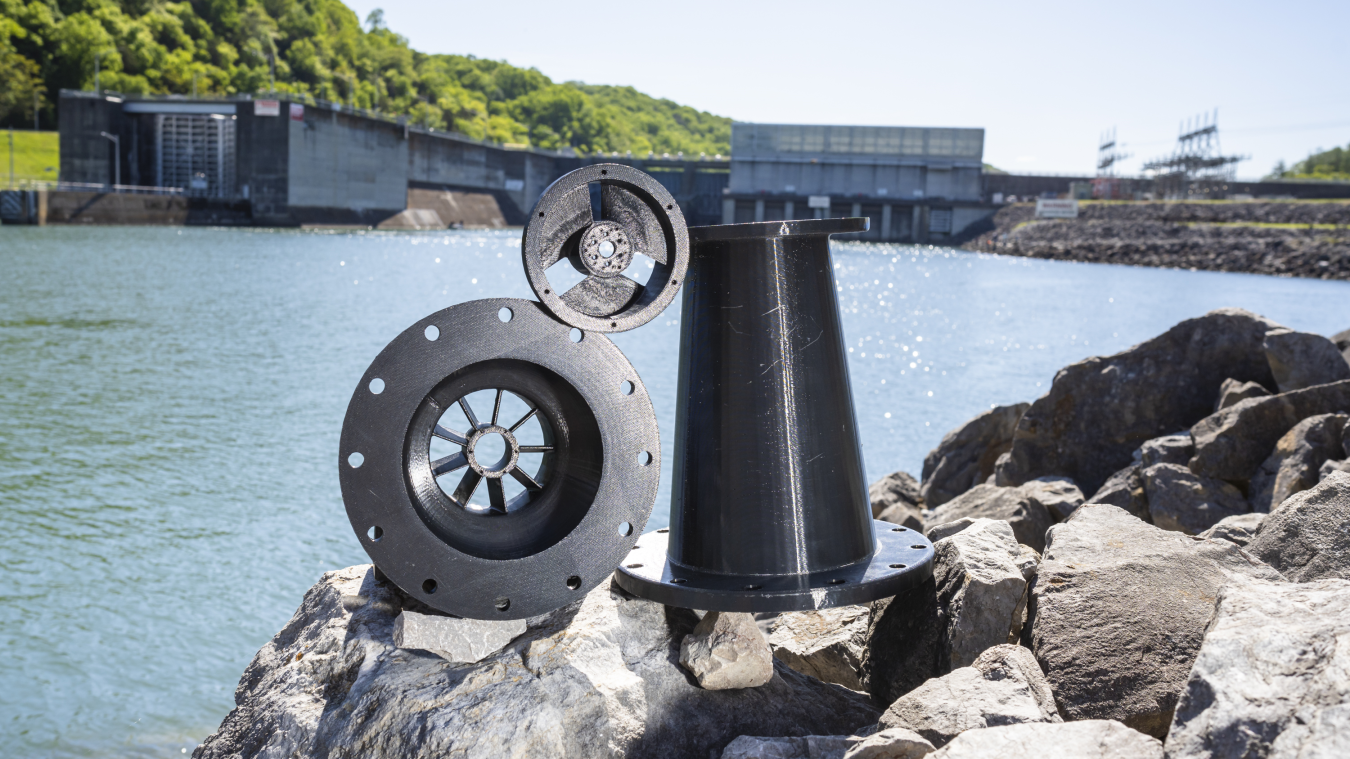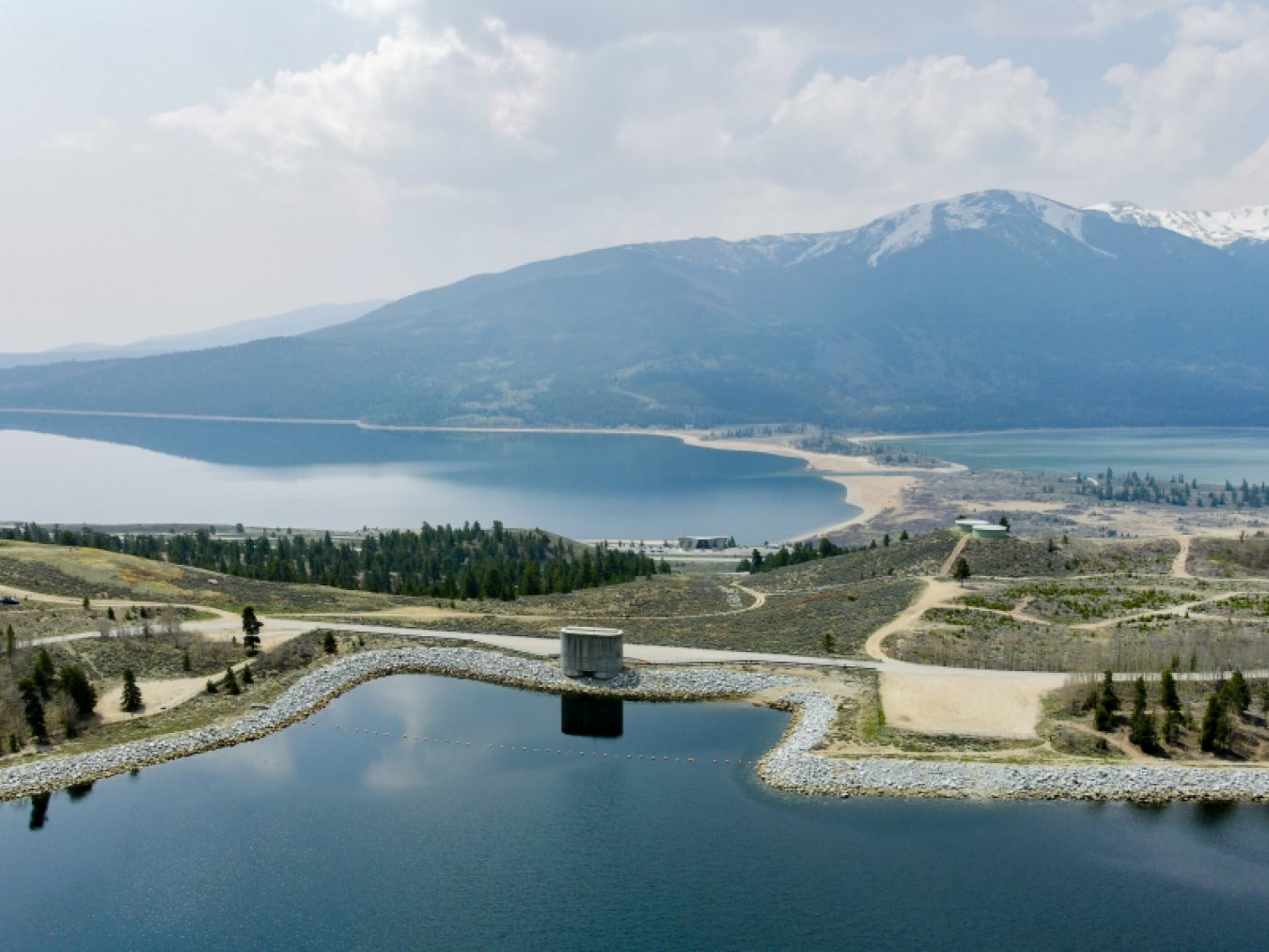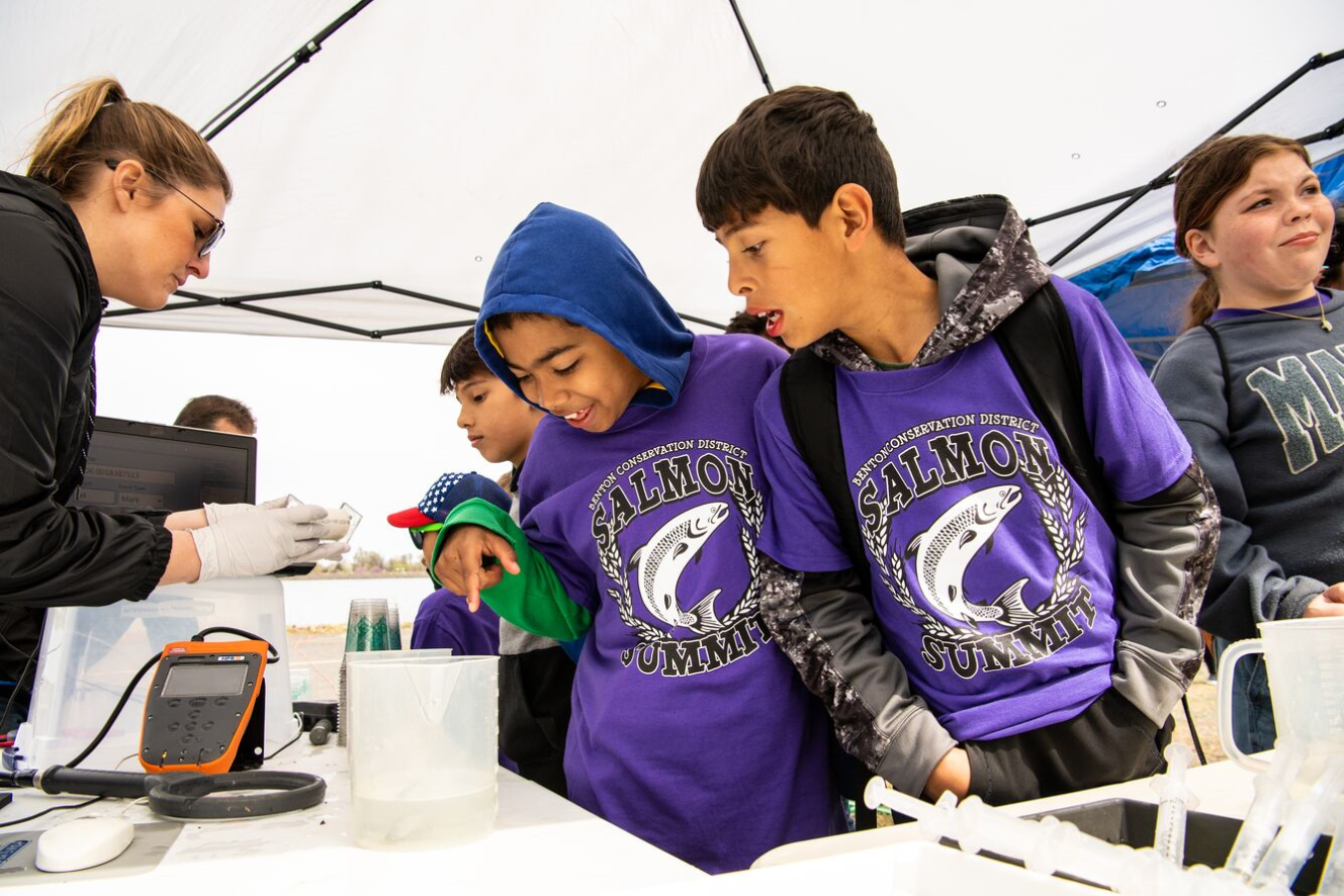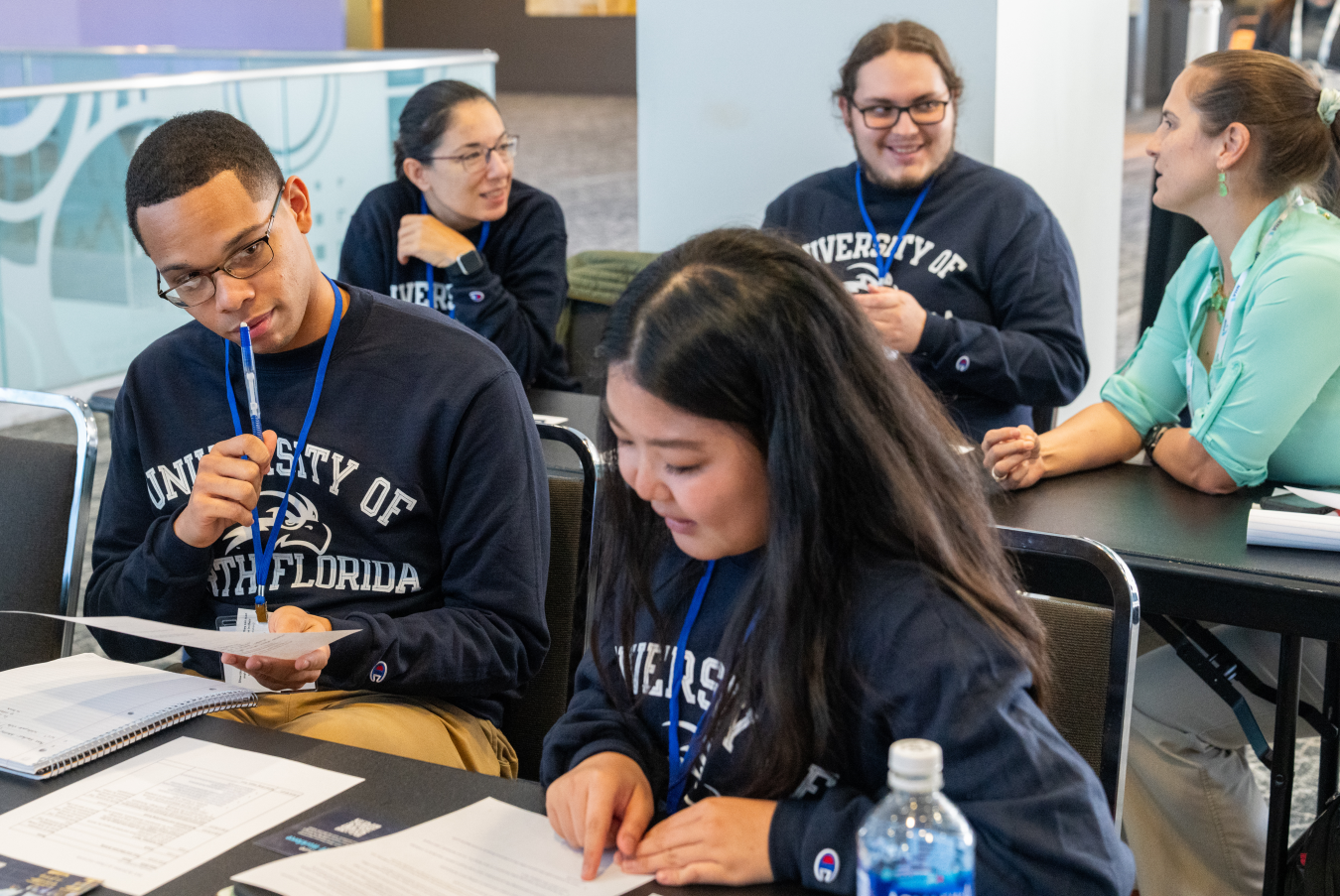Dive into the hydropower projects featured in the Water Power Technologies Office’s 2022–2023 Accomplishments Report and learn how they are making progress toward the country’s clean energy goals.
Water Power Technologies Office
May 8, 2024Hydropower has a key role in ensuring the electricity grid is reliable and stable—today and as it evolves to incorporate more variable renewable energy sources like wind and solar. This resource accounts for 28.7% of U.S. renewable electricity generation and about 6.2% of all U.S. electricity generation. Additionally, pumped storage hydropower (PSH) remains the largest contributor to U.S. energy storage, representing roughly 96% of utility-scale energy storage capacity in the United States in 2022.
Through its Hydropower Program, the U.S. Department of Energy’s Water Power Technologies Office (WPTO) supports projects focused on research, development, demonstration, and commercial activities to advance transformative, cost-effective, reliable, and environmentally sustainable hydropower and PSH technologies. The program also aims to better understand and capitalize on opportunities for these technologies to support the nation’s rapidly evolving grid and to improve energy-water infrastructure and security.
Dive into a selection of these projects featured in WPTO’s 2022–2023 Accomplishments Report.
Enabling Additional Hydropower Generation
There are significant opportunities to expand hydropower generation with low-impact technologies. For example, less than 3% of the more than 90,000 dams in the United States produce power. Adding power-generating infrastructure to these dams, as well as other existing structures like pipelines and canals, can help sustainably generate more hydropower. With support from WPTO, researchers:

- Examined how advanced manufacturing and materials could potentially lower operating costs and increase the efficiency of hydropower plants. This report outlined high-level manufacturing challenges the industry faces, along with four ways advanced manufacturing and materials could improve current hydropower manufacturing infrastructure. (Read about a new technical collaboration opportunity from WPTO and Oak Ridge National Laboratory focused on advanced manufacturing for hydropower!)
- Developed a comprehensive tool that allows users to identify and prioritize opportunities to add power-generating infrastructure to non-powered dams in the continental United States. The tool examines a variety of variables in four categories: grid, community, industry, and environment.
- Identified current gaps in hydropower testing capabilities in the United States and key improvements needed to expand hydropower technology validation and innovation. Researchers clarified the immediate needs for investment in hydropower testing, identified resources to carry out these improvements, and outlined potential barriers that prevent access to testing technologies.
- Conducted a study and compiled data on costs and timelines for small hydropower interconnection to create a one-stop-shop for facility owners and operators as they look to connect new and existing facilities to the electricity grid. This will help them obtain a better up-front understanding of the costs, timelines, and potential challenges of their grid interconnection projects.
Enhancing Hydropower’s Contributions to the Electricity Grid
WPTO also supports efforts that seek to understand, enable, and improve hydropower’s contributions to reliability, resilience, and integration in the rapidly evolving U.S. electricity system. As a result, researchers:

- Developed a new map and web tool that helps hydropower stakeholders understand how the Inflation Reduction Act’s investment tax credits can be used to develop PSH projects across the United States. This tool may help stakeholders, including project developers, land management agencies, and energy system operators, determine where to build PSH projects and how to decrease up-front costs of development.
- Issued three publications that analyze how hydropower’s value is likely to increase as the United States transitions to a clean energy grid. (Check out another report, released in March, that offers a comprehensive analysis of both the risks and opportunities for investing in small- to medium-sized hydropower and PSH projects.)
- Demonstrated a new portable microgrid solution that can help small towns and remote areas recover from power outages. It can strengthen the capabilities of small-town hydropower plants to integrate other energy sources and maintain stable power supplies to critical services after blackouts or other power disturbances.
- Identified about 1,800 sites in Alaska where the state could develop PSH projects to help support its clean energy transition.
- Analyzed the life cycle greenhouse gas impacts of energy storage technologies and found that closed-loop PSH systems have the lowest global warming potential across energy storage technologies when accounting for the full impacts of materials and construction.
- Examined the viability of different materials to line reservoirs at PSH facilities, which are frequently subject to rapid changes in water levels, putting stress on reservoir lining systems. Effective and resilient lining is essential to minimizing leaks and maximizing the operational efficiency of these plants.

Modernizing U.S. Hydropower Facilities
Most U.S. hydropower plants are more than 50 years old. As a result, it is critical to modernize facilities and incorporate state-of-the-art capabilities into hydropower infrastructure. In 2022 and 2023, WPTO supported researchers who:
- Worked with hydropower stakeholders to adapt an open-source software solution to support cybersecurity at hydropower facilities. This tool will help owners and operators better understand their facilities’ cyber assets and improve network security.
Supporting Environmental Performance
Hydropower has tremendous value to the power system as a flexible, renewable resource, and its long-term value is dependent on maintaining a high level of environmental performance across facilities. With that in mind, researchers:

- Supported the 25th annual Salmon Summit, an educational event in eastern Washington designed in part to inspire the next generation of hydropower researchers, diverse STEM professionals, and a science-aware community. Students from Washington’s Tri-Cities area and beyond saw how fish are tagged to monitor their movements through hydropower facilities and were introduced to different careers in fish passage research, such as biology, data science, engineering, and communications.
- Examined and published a report on how climate change may affect water availability for federal hydropower marketing and generation and its impact on future energy demand. This research provides stakeholders with state-of-the-art hydroclimate projections to support smart and informed energy planning.
- Measured carbon emissions from six hydropower reservoirs in the southeastern United States to better understand the effect of reservoirs with hydropower facilities on greenhouse gas emissions. They found that while emissions varied from reservoir to reservoir, many of the bodies of water absorbed more carbon than they emitted during summer, though this can vary both seasonally and across multiple years.
- Advanced a bio-based oil with a biodegradable and nontoxic formula that does not break down into harmful substances or collect in the environment over time, thus supporting hydropower’s sustainability and minimizing damage to the environment in the event of an uncontained fluid leak.
- Improved the resolution and accuracy of a noninvasive approach for detecting fish near hydropower facilities. It involves collecting and analyzing RNA and DNA (genetic material present in nearly all living organisms and released into the environment) from water samples collected in fish passage structures.
- Created an affordable, durable, and nontoxic coating designed to prevent biofouling—the accumulation of plants, animals, and microorganisms on wet surfaces—that can be used on both flat and flexible surfaces (such as ropes, nets, and buoy lines). This technology has implications across both the marine and hydropower sectors, where equipment frequently degrades when in contact with organisms found in water.
Improving Access to Hydropower Data
WPTO also funds projects that seek to improve access to data and develop new analytical capabilities. These efforts inform research that can support existing and future facilities, reduce hydropower’s impact, and identify ways to increase its contributions to grid reliability and resilience. For example, researchers working on WPTO-supported projects:

- Evaluated challenges and opportunities facing the hydropower industry and how it could attract a new, more diverse workforce. The resulting report summarizes current trends in the U.S. hydropower workforce and could help the sector understand what challenges are preventing it from recruiting workers and how to close workforce gaps.
- Developed a software tool to help stakeholders better access project information and navigate the permitting and licensing process associated with new hydropower projects or upgrades at existing facilities.
- Released the fourth edition of the U.S. Hydropower Market Report, which provides the latest data and research findings to offer a comprehensive overview of developments and trends in the U.S. hydropower and PSH sector. The report highlights developments from 2020–2022 (since the publication of the last report) and summarizes this information by region, plant size, owner type, and other attributes.
Learn more about hydropower and explore WPTO’s 2022–2023 Accomplishments Report. Stay up to date with the latest hydropower funding opportunities, events, and news by subscribing to the bimonthly Hydro Headlines and the monthly Water Wire newsletters.

